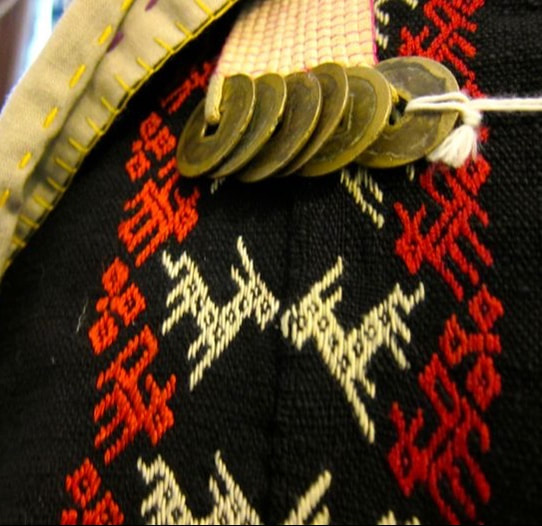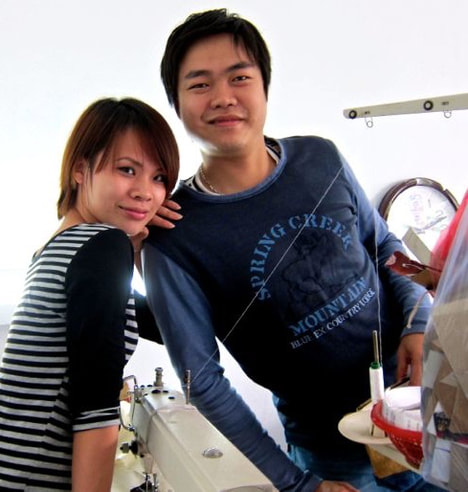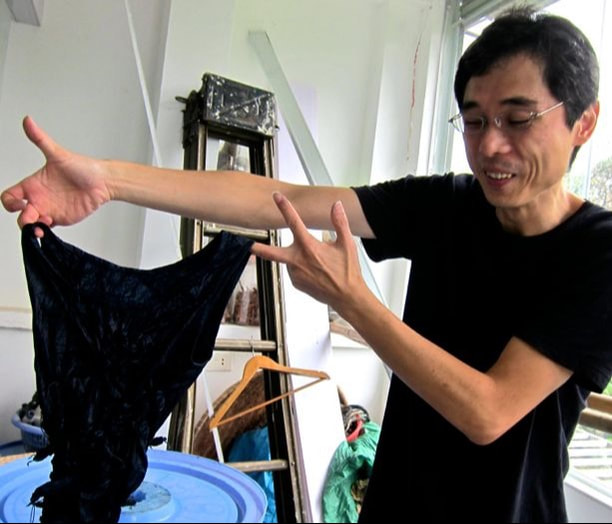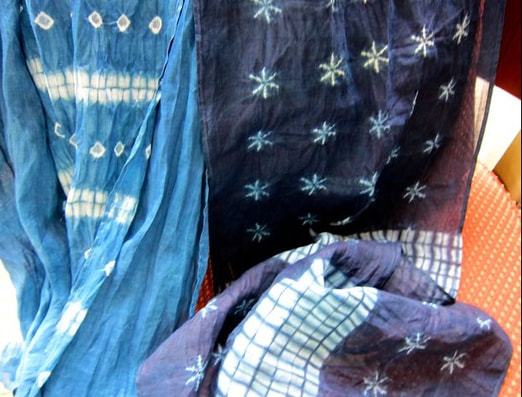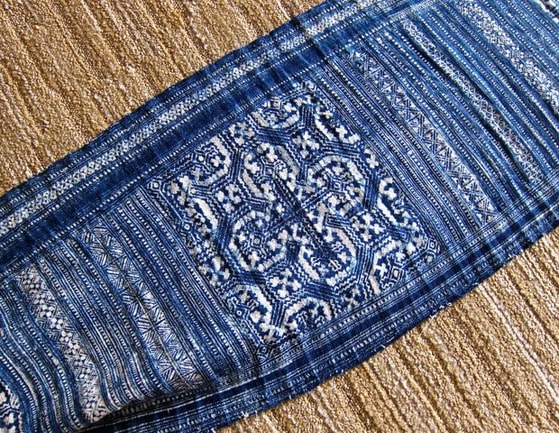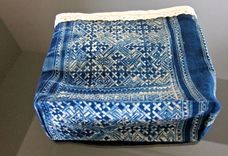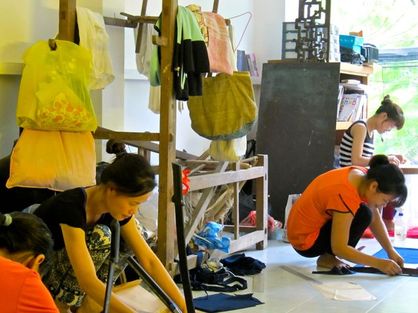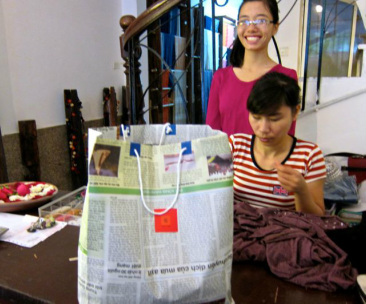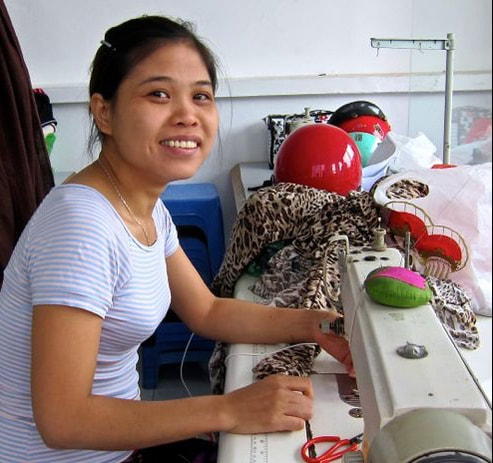Indigo: Saving Vietnam's Traditional Handicraft
When I set out today, I was hoping to check out a craft store I had read about. As sometimes happens, the promotion was somewhat ahead of the reality and I was bit disappointed.
So..it was a new neighborhood that might be hiding almost anything...and off I wandered. And I was duly rewarded for my faith in the unexpected!
So..it was a new neighborhood that might be hiding almost anything...and off I wandered. And I was duly rewarded for my faith in the unexpected!
Indigo Store
A store display caught my eye and I slowed to look in. As I peeked inside, I saw what appeared to be new fabric designs and interesting displays of unique clothing, so in I went. The store had just opened (about 4 days ago) and the owner was a bit apologetic as renovation was still going on. However, I quickly saw that everything in the store was of wonderful quality and as I discovered, all designed by the owner himself
A store display caught my eye and I slowed to look in. As I peeked inside, I saw what appeared to be new fabric designs and interesting displays of unique clothing, so in I went. The store had just opened (about 4 days ago) and the owner was a bit apologetic as renovation was still going on. However, I quickly saw that everything in the store was of wonderful quality and as I discovered, all designed by the owner himself
Seeing that I was intrigued, he offered to show me the workshop in the two floors on the top level. Of course, my interest was at its peak and when we reached the workshop, what a wonderful surprise. The production team were deaf and mute and just delighted to see a new face. They started to sign with their hands asking more about me. They were as curious about me as I was of them.
Founder of Indigo
Mr. Takeshi Yashizawa used to be a fabric specialist in an import handicraft company in Japan. His firm was always searching out new products and he had read snippets about some of the unique crafts produced by ethnic groups in Turkey. However, Visa issues interferred.
His assignment was to find new products, so he went to a bookstore, closed his eyes and pointed himself at the books in the travel section. His hand blindly grasped a book on Vietnam so accepting fate, he made the purchase.
Again, he used his usual method of research, closed his eyes and opened a page. It fell on Sapa. As he was reading, he learned more about the ethnic minorities of Sapa and saw some of the fabrics they are wearing. At that time, the different ethnic groups still planted hemp or cotton, spun and wove the fiber into wearable clothing.
Mr. Takeshi Yashizawa used to be a fabric specialist in an import handicraft company in Japan. His firm was always searching out new products and he had read snippets about some of the unique crafts produced by ethnic groups in Turkey. However, Visa issues interferred.
His assignment was to find new products, so he went to a bookstore, closed his eyes and pointed himself at the books in the travel section. His hand blindly grasped a book on Vietnam so accepting fate, he made the purchase.
Again, he used his usual method of research, closed his eyes and opened a page. It fell on Sapa. As he was reading, he learned more about the ethnic minorities of Sapa and saw some of the fabrics they are wearing. At that time, the different ethnic groups still planted hemp or cotton, spun and wove the fiber into wearable clothing.
In those days, a trip to Sapa was not easy as the roads were muddy and broken and it took 12 hours from Hanoi. When he reached the SAPA guest house, he met a young woman working there who had helped many anthropologists and other researchers who proliferated at that time in the north of Vietnam.
Whole clusters of undergraduate arrived weekly hoping to learn about the ethnic groups there, how they lived, their customs and traditions their houses and their livelihood. Old Gary Larsen cartoons come to mind!, He asked his new acquaintance many questions as he found her very knowledgeable and with her help discovered many quality fabrics and crafts in the area. As a result he would return there over the next 3 years, always searching in far flung villages with the help of his new friend and 3 years later, he married her.
With a heightened interest in the crafts of Vietnam and a H’mong linked wife, it was time to move from observer to businessman again and he started exporting the products to Japan.
Whole clusters of undergraduate arrived weekly hoping to learn about the ethnic groups there, how they lived, their customs and traditions their houses and their livelihood. Old Gary Larsen cartoons come to mind!, He asked his new acquaintance many questions as he found her very knowledgeable and with her help discovered many quality fabrics and crafts in the area. As a result he would return there over the next 3 years, always searching in far flung villages with the help of his new friend and 3 years later, he married her.
With a heightened interest in the crafts of Vietnam and a H’mong linked wife, it was time to move from observer to businessman again and he started exporting the products to Japan.
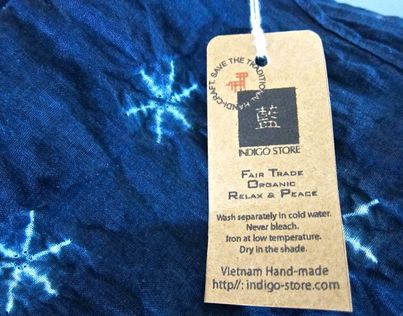
Mr. Takeshi would go straight to the village people and when he saw something interesting he would ask them to make as many as they could for him.
The next time he went back to the area, they would present him with a very few, sometimes only 5 pieces.
But the demand for these fabrics and crafts in Japan was surging so he encouraged the older women to teach their daughters the production techniques. The younger generation had rarely showed any interest in these crafts and had never bothered to learn. But when they saw how much their mothers were earning, they were encouraged. AHHH the joys of capitalism!
Eventually, to meet the demand, other villagers mastered the skills too. What was interesting according to Mr. Takeshi, was that they recalled the patterns and processes of their forbearers and through sharing of what they had previously observed, improved the products even further.
There were times when he encouraged villagers to plant more hemp especially in those areas where he found the highest quality of hemp fabric. He explained that they should harvest the hemp after 3 months as the skin would be just right for the quality hemp he first saw in Sapa.
The next time he went back to the area, they would present him with a very few, sometimes only 5 pieces.
But the demand for these fabrics and crafts in Japan was surging so he encouraged the older women to teach their daughters the production techniques. The younger generation had rarely showed any interest in these crafts and had never bothered to learn. But when they saw how much their mothers were earning, they were encouraged. AHHH the joys of capitalism!
Eventually, to meet the demand, other villagers mastered the skills too. What was interesting according to Mr. Takeshi, was that they recalled the patterns and processes of their forbearers and through sharing of what they had previously observed, improved the products even further.
There were times when he encouraged villagers to plant more hemp especially in those areas where he found the highest quality of hemp fabric. He explained that they should harvest the hemp after 3 months as the skin would be just right for the quality hemp he first saw in Sapa.
Mr. Takeshi's Quest for Quality
In some countries where hemp is grown , they harvest the plants after say 6 months, so the skin is tougher making the fabric heavier. He uses only the skin and not the inside of the hemp stalk and he showed me the difference in the quality of the different hemp products displayed in the store.
Once, the eponymous Takeshi trekked a steep mountain to reach a Dao village and after seeing their cotton fabric, encouraged them to plant more cotton. Just when they were about to harvest the cotton, a strong storm came and just destroyed everything.
He realized he had another mountain to climb! To find the quality products and bring them to the store takes some risk but for one whose passion is fabric and quality handicrafts, there is no balking from any of these.
In some countries where hemp is grown , they harvest the plants after say 6 months, so the skin is tougher making the fabric heavier. He uses only the skin and not the inside of the hemp stalk and he showed me the difference in the quality of the different hemp products displayed in the store.
Once, the eponymous Takeshi trekked a steep mountain to reach a Dao village and after seeing their cotton fabric, encouraged them to plant more cotton. Just when they were about to harvest the cotton, a strong storm came and just destroyed everything.
He realized he had another mountain to climb! To find the quality products and bring them to the store takes some risk but for one whose passion is fabric and quality handicrafts, there is no balking from any of these.
This passion for quality fabric and crafts eventually led him and his wife to open their own store, Indigo. After relocating several times, they finally found a home for Indigo here in Van Mieu in Hanoi (33A P. Van Mieu, Dong Da, Hanoi, Vietnam), right beside the Temple of Literature, a famous landmark.
Below are pictures of my first round of buys from the store. I will definitely be going back there several more times for other unique items...and when I report back, I’ll tell the story of the deaf and mute work force. Mr. Takeshi may be worth a book!!!!
Below are pictures of my first round of buys from the store. I will definitely be going back there several more times for other unique items...and when I report back, I’ll tell the story of the deaf and mute work force. Mr. Takeshi may be worth a book!!!!
Just love this indigo hand woven mat on the left. The traditional design is woven into the fabric.
The scarves on the right are tie dyed using very fine cotton following the traditional Black Thai way. You can watch tie dying in the Indigo workshop on the upper level in the store.
Mr. Takeshi first found this worn by an older black Thai woman as a head turban and he asked if she could make for him.
The scarves on the right are tie dyed using very fine cotton following the traditional Black Thai way. You can watch tie dying in the Indigo workshop on the upper level in the store.
Mr. Takeshi first found this worn by an older black Thai woman as a head turban and he asked if she could make for him.
Best Buys at Indigo
More Pictures of the Indigo Workshop at 33 Van Mieu
More Pictures of the Indigo Workshop at 33 Van Mieu
The upper floor of the Indigo Store is a workshop manned by the deaf and mute. You can see them busy and enjoying their work. Indigo also has a store in the popular shopping street, Hang Gai (47 Hang Gai St., Hoan Kiem). Tel. Hang Gai: 0439381859; Van Mieu: 0437193090
The upper floor of the Indigo Store is a workshop manned by the deaf and mute. You can see them busy and enjoying their work. Indigo also has a store in the popular shopping street, Hang Gai (47 Hang Gai St., Hoan Kiem). Tel. Hang Gai: 0439381859; Van Mieu: 0437193090
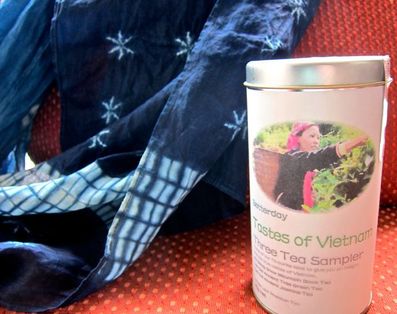 Unique Indigo Designs. Source: aesta1
Unique Indigo Designs. Source: aesta1
This particular Betterday tea is a sampler of 3 classic Vietnamese tea from the northern villages of Vietnam. Inside are 3 packages of Ancient Tree Green Tea from 100 year old trees from the Dao minority in A Mu Sung, Lao Cai, ancient green tea slightly flavoured with fresh jasmine flowers and Ha Giang Snow Mountain tea.
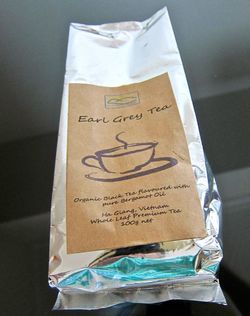 Organic Tea at Indigo. Source: aesta1
Organic Tea at Indigo. Source: aesta1
Indigo also sells Organic Tea and Coffee. I only got tea but I will try their coffee next time.
The package on the left is the organic Snow Mountain black tea produced by H'mong and Dao tea farmers at an elevation of more than 1000 m.
For more on tea in Vietnam, check out this website:
Betterday
Do you like to support the move towards organic? Share this post with your friends. Visit Indigo's website: indigostore.hanoi.myharavan.com
Check out these other sites on Vietnamese handicrafts:
The package on the left is the organic Snow Mountain black tea produced by H'mong and Dao tea farmers at an elevation of more than 1000 m.
For more on tea in Vietnam, check out this website:
Betterday
Do you like to support the move towards organic? Share this post with your friends. Visit Indigo's website: indigostore.hanoi.myharavan.com
Check out these other sites on Vietnamese handicrafts:
